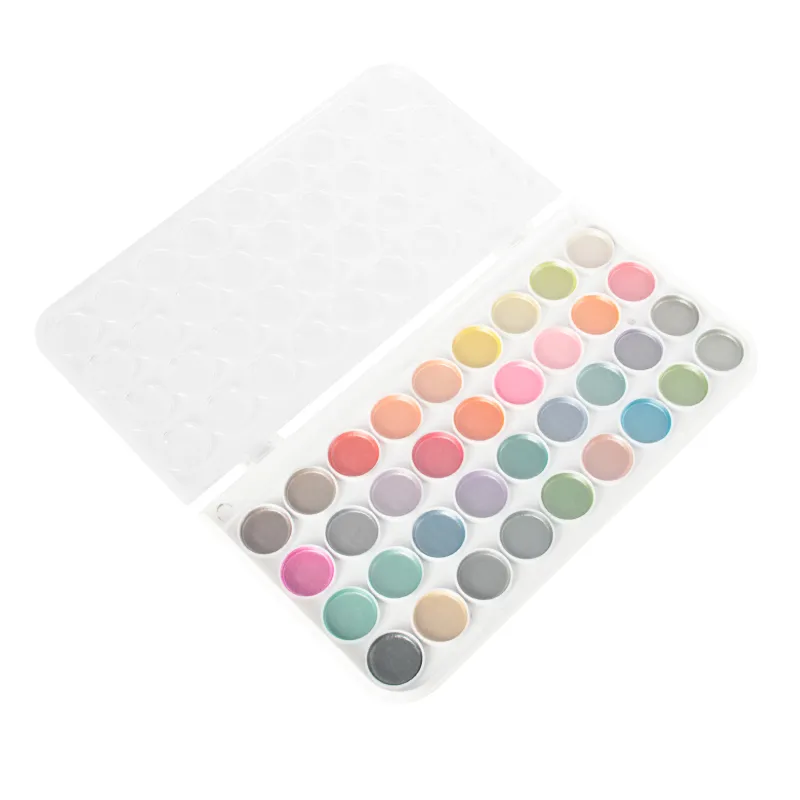- English
- Español
- Português
- русский
- Français
- 日本語
- Deutsch
- tiếng Việt
- Italiano
- Nederlands
- ภาษาไทย
- Polski
- 한국어
- Svenska
- magyar
- Malay
- বাংলা ভাষার
- Dansk
- Suomi
- हिन्दी
- Pilipino
- Türkçe
- Gaeilge
- العربية
- Indonesia
- Norsk
- تمل
- český
- ελληνικά
- український
- Javanese
- فارسی
- தமிழ்
- తెలుగు
- नेपाली
- Burmese
- български
- ລາວ
- Latine
- Қазақша
- Euskal
- Azərbaycan
- Slovenský jazyk
- Македонски
- Lietuvos
- Eesti Keel
- Română
- Slovenski
- मराठी
- Srpski језик
What are the steps for using solid watercolor?
2024-09-13
Solid watercolor is a solid pigment made by mixing pigment with gum base. It is characterized by bright colors, easy to use and easy to carry. Solid watercolor is widely used in sketching, painting, illustration, comics and other fields.

1. Place the solid watercolor on a palette or other surface that can mix colors.
2. Use a brush to wet water and gently dip the solid watercolor into the desired color. Solid watercolor is usually dry, so you need to use a wet brush to activate it.
3. Mix colors on the palette: You can mix various colors according to your needs, or you can directly use the original colors of solid watercolor. When the brush is dipped in the paint, the color intensity can be adjusted by different mixing ratios.
4. Use a brush to color: After dipping the wet brush in the paint, you can start coloring. You can use the brush to gently smudge the color, or you can use the brush to color directly to create different effects. Pay attention to controlling the viscosity of the paint, adjust the amount of water as needed, and avoid excessive water causing the color to flow too much.
5. Overlay and adjustment: Solid watercolor has a good overlay property, and you can get a richer color effect by overlaying different colors. When overlaying, pay attention to the drying speed of the color to prevent the pigments from mixing together.
6. Use different brushstrokes and techniques: You can try using different brushes in painting, such as using a wide flat brush to color a large area, and using a sharp brush to depict details. You can also try different techniques such as wet and dry watercolor to create different effects.
7. Pay attention to drying time and storage: Solid watercolor has a relatively short drying time. It is best to keep it flat after painting to avoid the flow of paint. If you need to save your work, you can use a transparent folder or frame it to prevent the color from fading.




